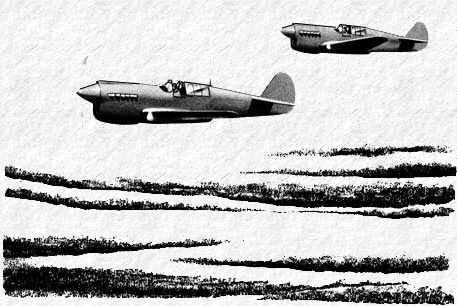
|
The P-40 operates best around 12,000 feet, but you have plenty of Occasion to fly at 20,000 feet and higher. Above 15,000 feet there is , marked decrease in reserve engine power. Remember this, especially when you are flying in formation. If you lag behind, it may be impossible to catch up. Be especially careful to hold formation at high altitudes. To get additional power above 15,000 feet put the mixture control in AUTO LEAN and increase rpm. Caution: Do not increase rpm past 2600. On P-40 N's with prop and throttle linkage, your propeller switch must be in FIXED PITCH when you fly above 15,000 feet. Here's why: When you increase the throttle, the propeller setting also increases. Around 15,000 or 16,000 feet the rpm setting jumps to 2700-2900 without a corresponding increase in manifold pressure. |
By using FIXED PITCH you prevent the rpm from becoming excessive. When flying formation at high altitudes, remember that the tendency of the airplane to mush and your own tendency to over control increases greatly. Anticipate the need for corrections. Begin correcting sooner at high altitudes than you would at low altitudes. Don't wait too long to correct and then try to make up for lost distance by jockeying the controls. Perform high-altitude aerobatics with the same airspeeds and with the same control pressures that you use at low altitudes, with one important difference: Because the air is thinner, you need more space to maneuver your airplane. Vertical dives from above 20,000 feet are not recommended because of the danger of compressibility. |


